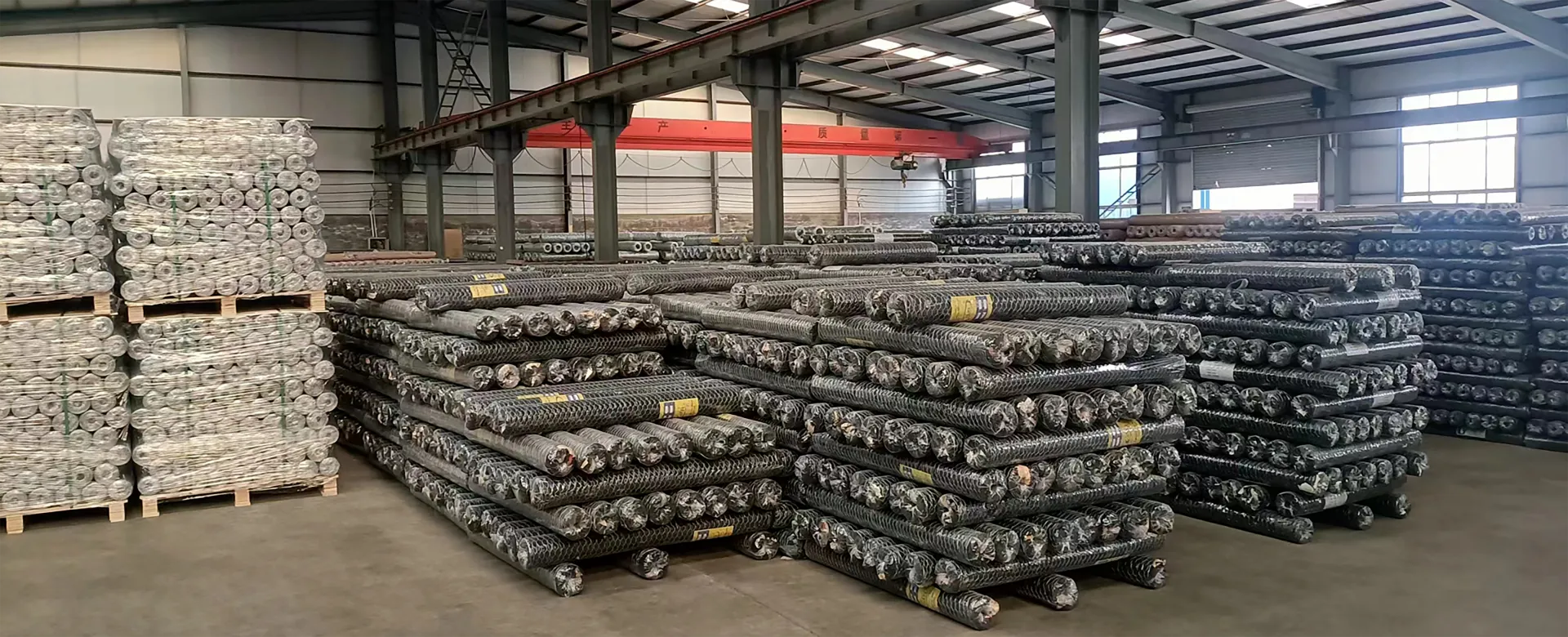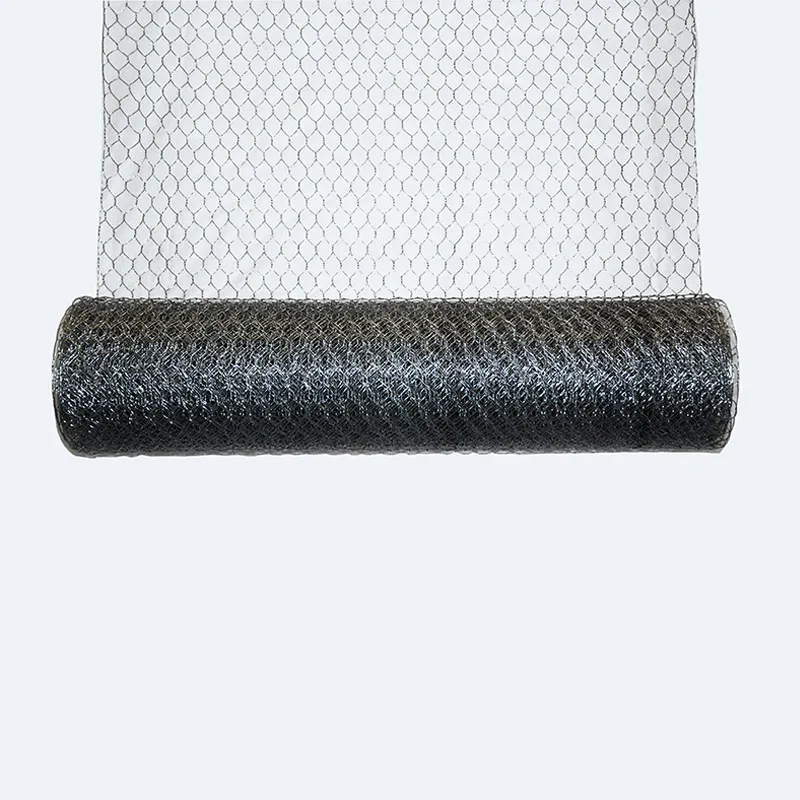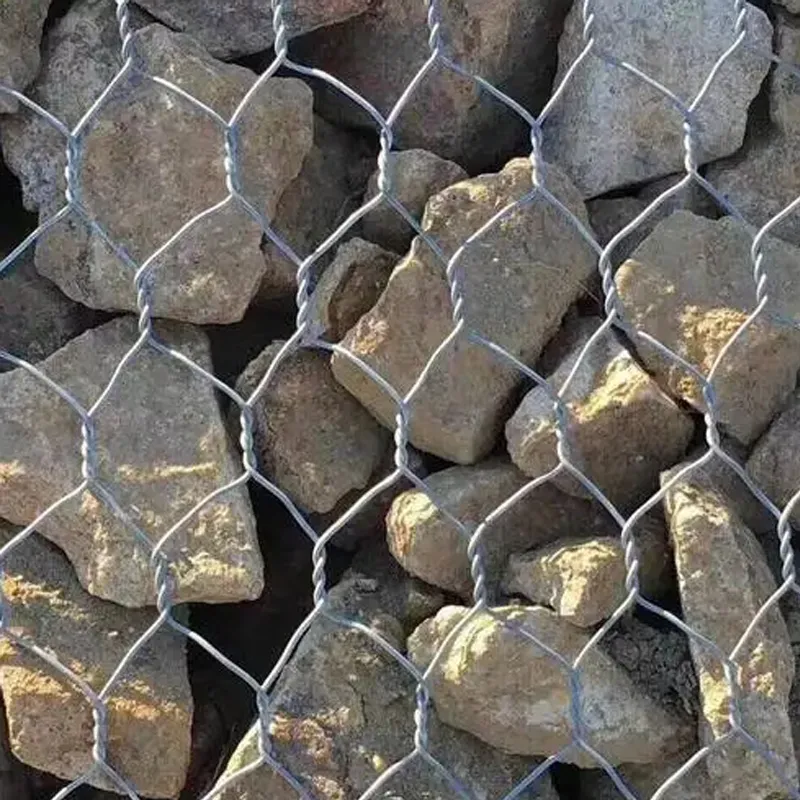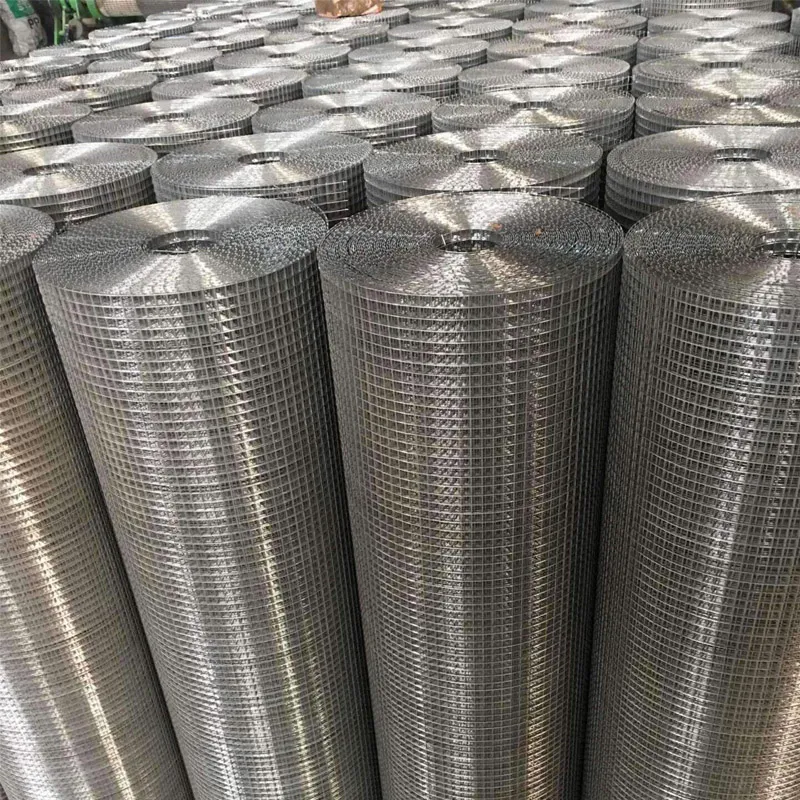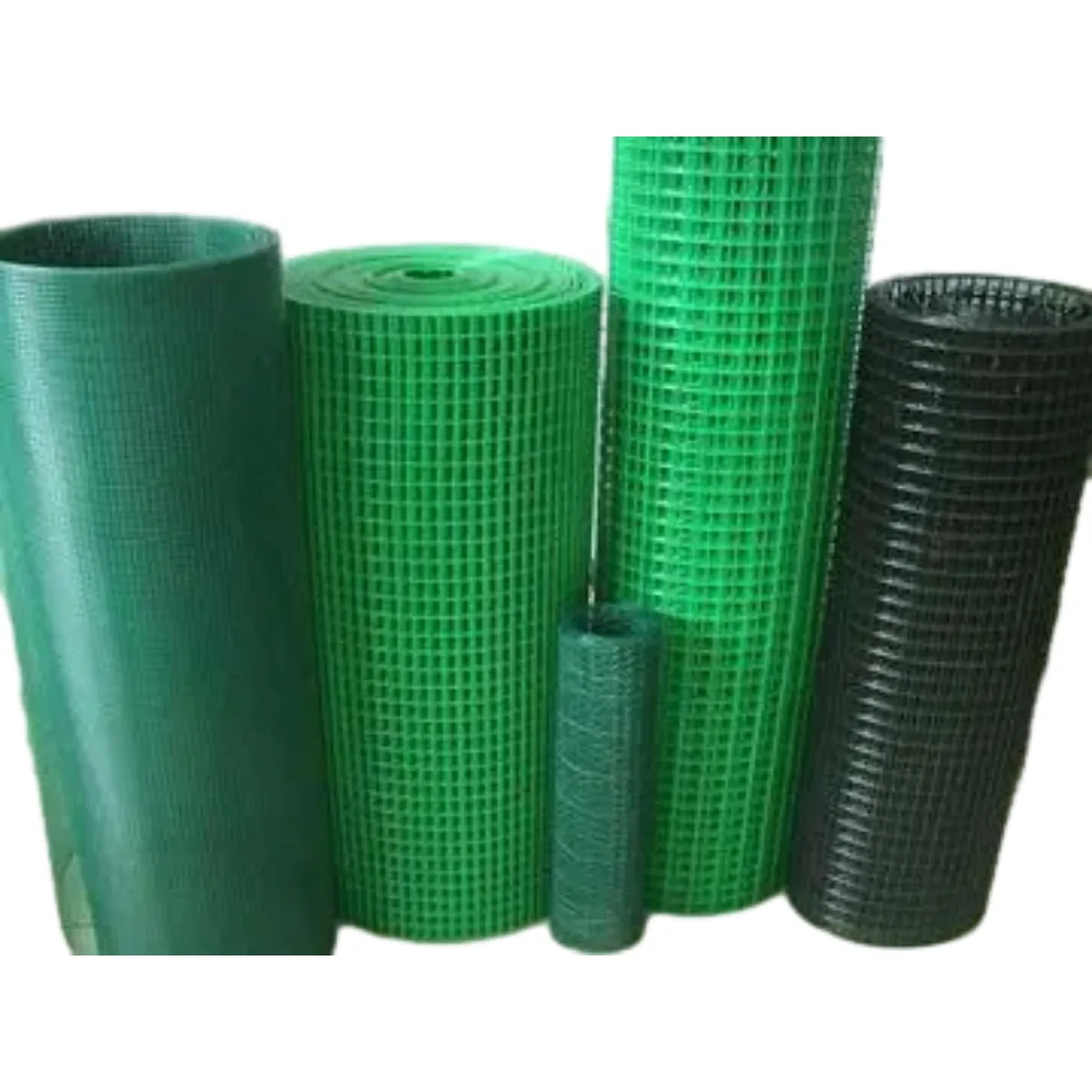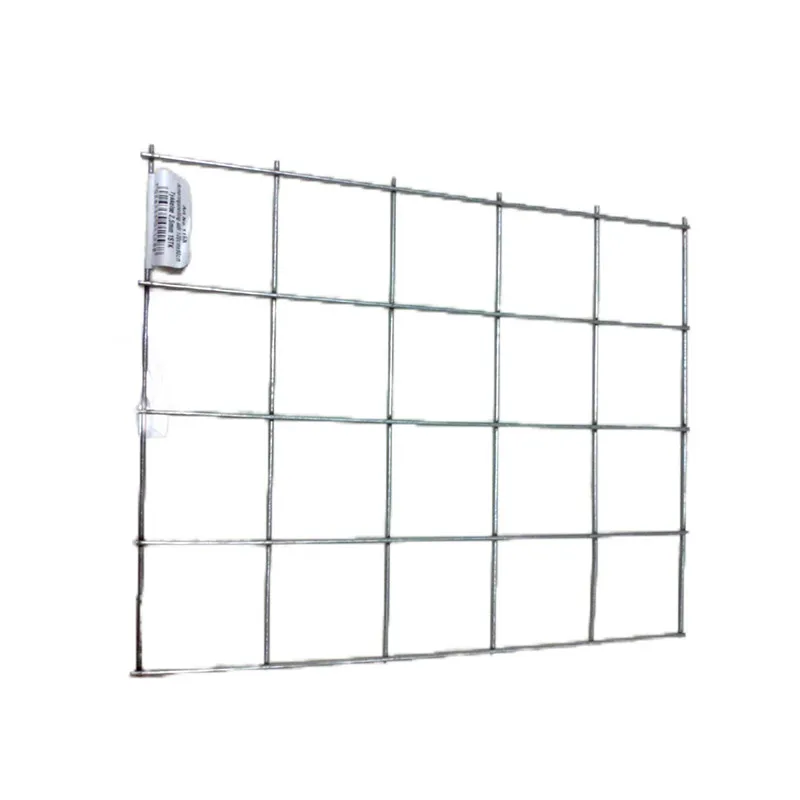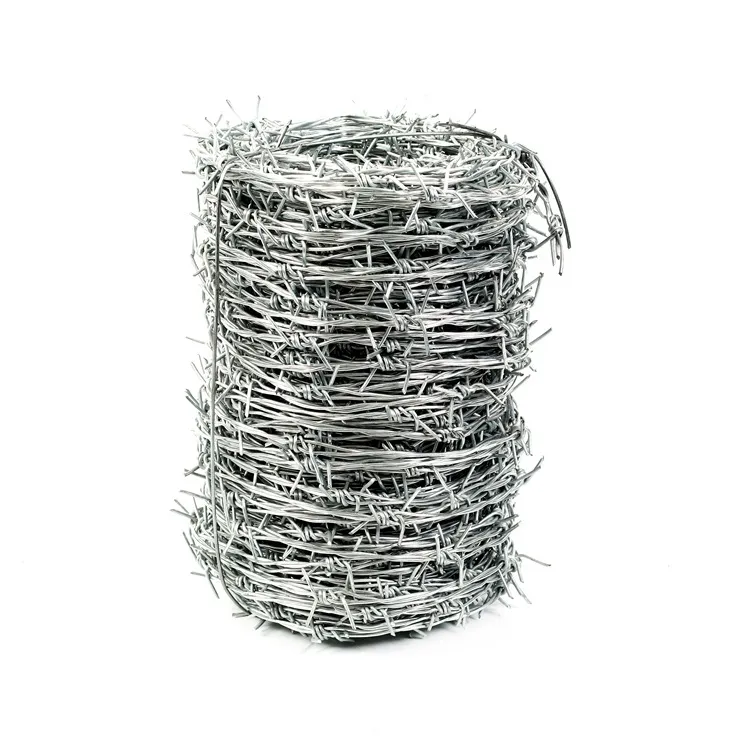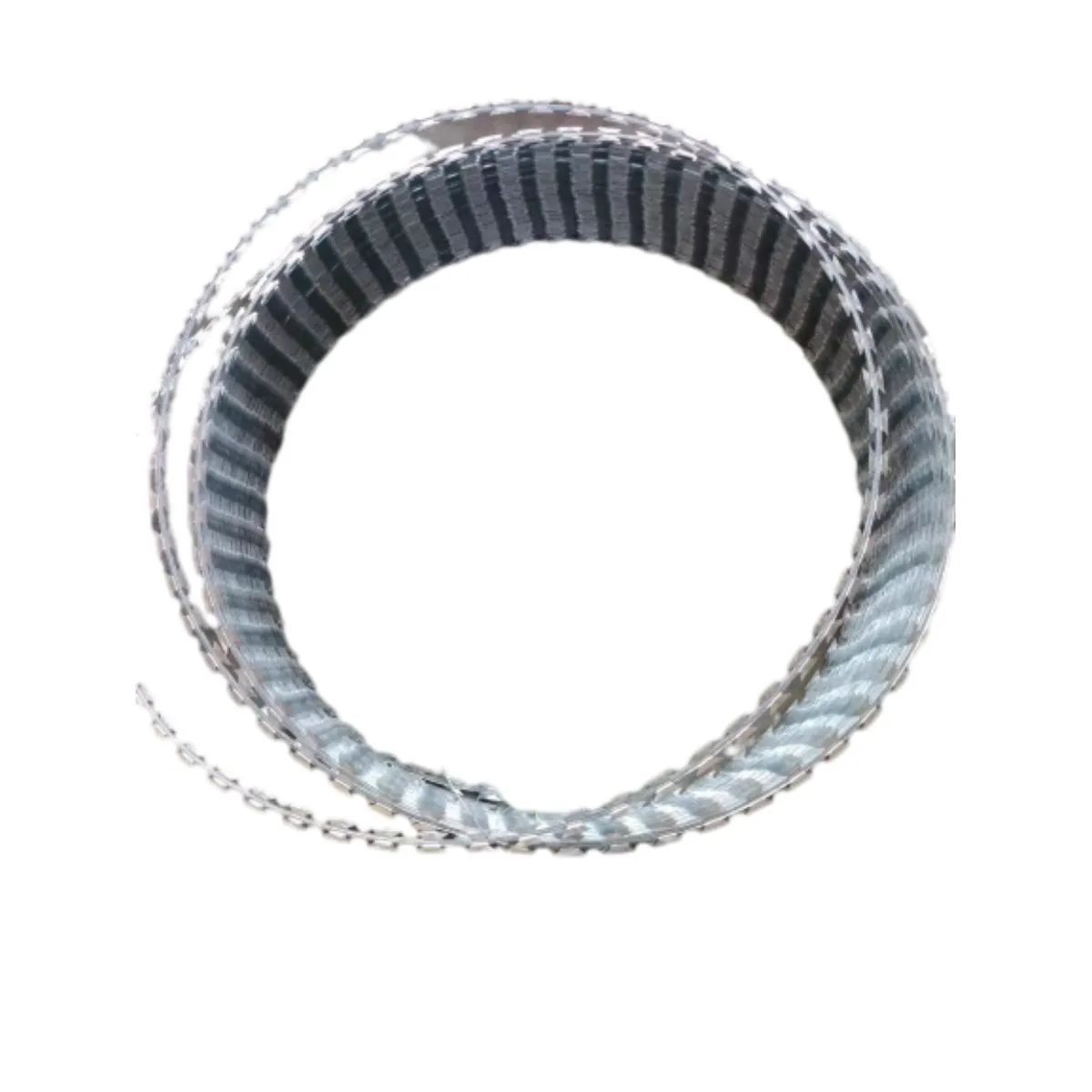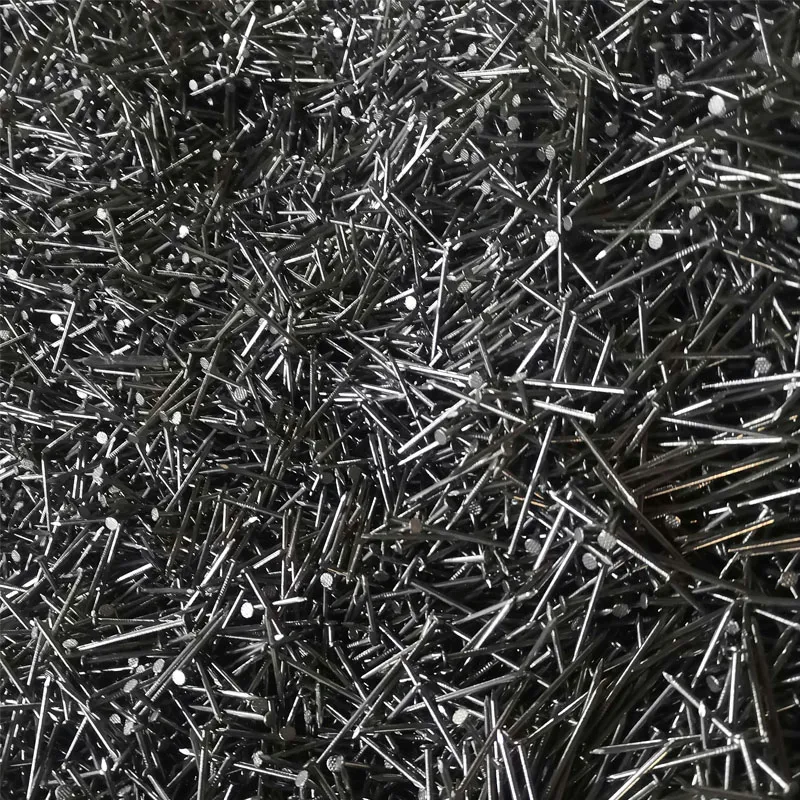Aug . 08, 2025 04:20 Back to list
Durable Barbed Wire Mesh for Enhanced Security Fencing
In an increasingly security-conscious world, the demand for robust and reliable perimeter solutions has never been higher. Among the myriad options available, barbed wire mesh stands out as a time-tested, cost-effective, and highly effective deterrent. This comprehensive guide delves into the world of Barbed Wire, exploring its critical role in various sectors, its technical intricacies, and the strategic advantages it offers. From agricultural boundaries to high-security installations, understanding the nuances of Barbed Wire is essential for informed decision-making.
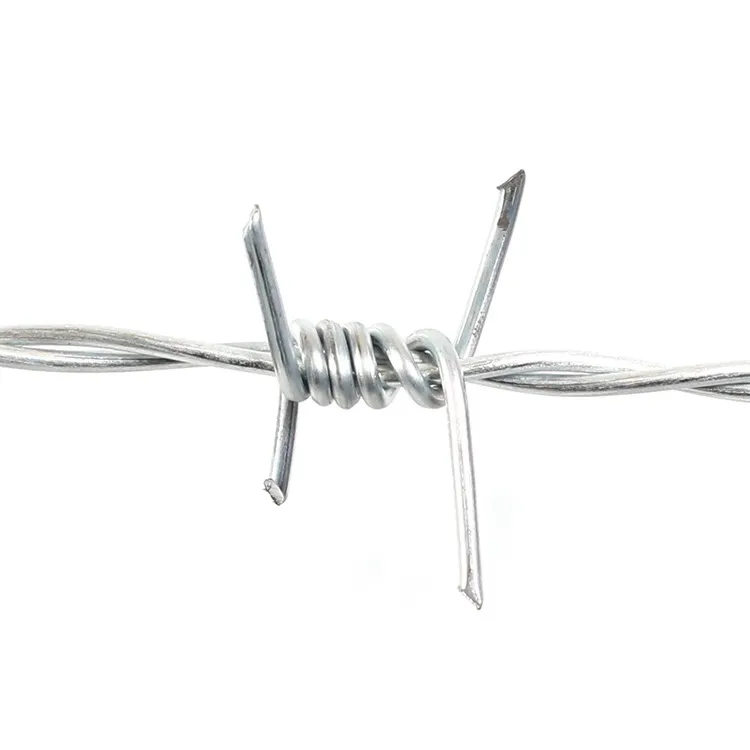
Understanding the Evolving Landscape of Perimeter Security
Industry Trends and Demand Drivers for Barbed Wire Mesh
The global security fencing market is experiencing significant growth, driven by escalating concerns over property protection, border security, and infrastructure safeguarding. Reports indicate a compound annual growth rate (CAGR) of approximately 5.5% for the global security fencing market from 2023 to 2030, with a substantial portion attributed to traditional yet effective solutions like barbed wire mesh and razor wire. Key trends include:
- Increased Urbanization & Industrialization: Growing populations and industrial expansion necessitate clearer property lines and enhanced security measures.
- Rising Crime Rates & Vandalism: Businesses and homeowners are investing more in physical security to deter theft, trespass, and malicious damage.
- Border Security & National Infrastructure Protection: Governments globally are reinforcing their borders and critical infrastructure with multi-layered security systems, where barbed wire mesh often forms the primary barrier or an integral part of a larger security fence.
- Agricultural Sector Needs: Farmers continue to rely on barbed fencing wire for livestock containment and protecting crops from wildlife. The simplicity and effectiveness of barbed wire mesh make it indispensable.
- Technological Integration: While a traditional product, barbed wire mesh is increasingly integrated with electronic surveillance, alarms, and access control systems, forming hybrid security solutions.
Unpacking the Product: Barbed Wire Specifications and Characteristics
Product Name: Barbed Wire
Product URL: https://www.yiszhewiremesh.com/barbed-wire.html
Technical Parameters of High-Quality Barbed Wire
Understanding the technical specifications of barbed wire mesh is crucial for selecting the right product for a given application. The durability, deterrent capability, and lifespan are heavily influenced by these parameters. Here's a detailed look:
| Parameter | Description | Common Range/Standard | Importance |
|---|---|---|---|
| Wire Material | Typically high-quality steel wire, often carbon steel. The composition dictates strength and flexibility. | Low Carbon Steel (Q195/Q235), High Carbon Steel (for high tensile) | Affects tensile strength and overall durability. Low carbon is more ductile, high carbon is stronger. |
| Surface Treatment | Coating applied for corrosion resistance and extended lifespan. | Hot-Dip Galvanized (HDG), Electro Galvanized (EG), PVC Coated, Stainless Steel | Crucial for longevity in harsh environments. HDG offers superior corrosion resistance compared to EG. PVC coating adds extra protection and color options. |
| Wire Gauge (Diameter) | The thickness of the line wire and barb wire. Measured in BWG (Birmingham Wire Gauge) or mm. | Line Wire: 10 BWG (3.05mm) to 16 BWG (1.65mm); Barb Wire: 12 BWG (2.77mm) to 18 BWG (1.24mm) | Thicker wire provides greater strength and resistance to cutting or breaking. |
| Strands | Number of main wires twisted together. | 2 strands (Double Strand) | Double strand is the most common, offering good stability for barbs. |
| Barb Type | Configuration of the barbs. | 4-point (4 spikes), 2-point (2 spikes) | 4-point barbs offer a more aggressive deterrent than 2-point. |
| Barb Spacing | Distance between adjacent barbs along the line wire. | 3 inches (7.5cm) to 6 inches (15cm) | Closer spacing increases deterrent effect and makes climbing more difficult. |
| Barb Length | Length of the individual barb points. | 0.5 inches (1.27cm) to 1 inch (2.54cm) | Longer barbs are more effective deterrents. |
| Tensile Strength | The maximum stress the wire can withstand before breaking. | Typically 350-550 N/mm² for low carbon; 700-900 N/mm² for high tensile | Indicates resistance to cutting and pulling. High tensile barbed wire mesh is significantly stronger. |
| Coil Diameter & Length | Dimensions of the finished roll. | Rolls of 25m, 50m, 100m, 200m, 250m. Coil diameters vary. | Affects handling, storage, and coverage per roll. |
| Usage Lifespan | Expected duration of effective performance. | Electro Galvanized: 3-5 years; Hot-Dip Galvanized: 10-20+ years; PVC Coated: 15-25+ years | Directly tied to surface treatment and environmental conditions. |
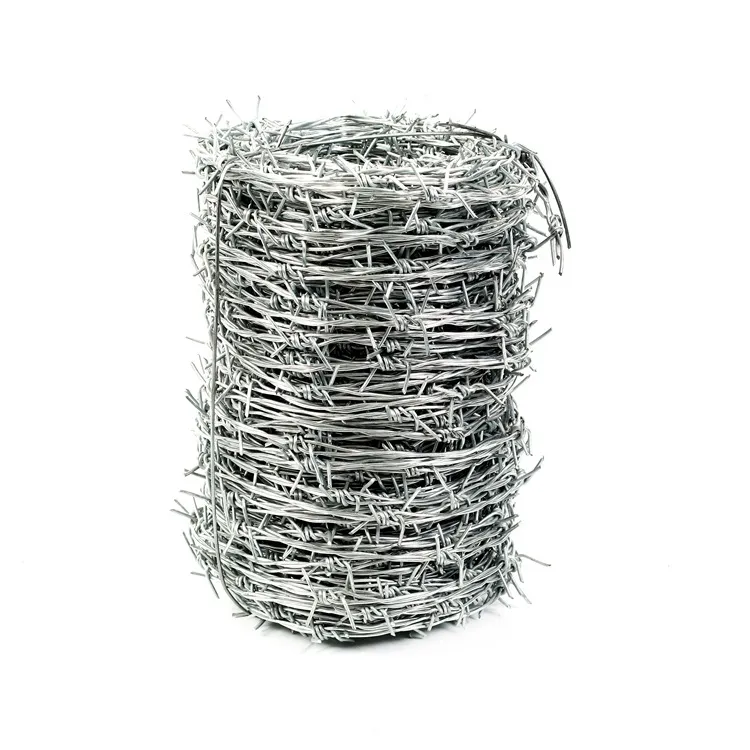
The Art and Science of Manufacturing Barbed Wire
Barbed Wire Mesh Manufacturing Process Explained
The creation of high-quality barbed wire mesh is a sophisticated industrial process that combines precision engineering with material science. At Yiszhe Wire Mesh, we adhere to stringent quality control throughout every stage to ensure the superior performance and longevity of our products. Here's a step-by-step breakdown of the manufacturing process:
Wire Rod Preparation & Drawing
The journey begins with high-grade steel wire rods, primarily low-carbon or high-carbon steel, selected based on desired tensile strength. These rods undergo a process called wire drawing, where they are pulled through a series of progressively smaller dies. This reduces their diameter to the precise gauge required for the line wires and barb wires (e.g., 2.5mm for line wire, 2.0mm for barb wire). This process enhances the wire's tensile strength and ductility, preparing it for subsequent stages.
Surface Treatment: Galvanization & Coating
To ensure exceptional resistance to corrosion, the drawn wire undergoes surface treatment. The most common and effective method is Hot-Dip Galvanization (HDG), where the wire is immersed in a bath of molten zinc. This creates a metallurgical bond, forming a thick, durable, and uniform zinc coating that complies with standards like ASTM A123. For enhanced protection and aesthetics, wires can also be Electro-Galvanized (EG) or PVC Coated. PVC coating provides an additional layer against rust, UV radiation, and harsh chemicals, extending the product's lifespan significantly.
Barb Formation & Twisting
The core of barbed wire mesh production lies in the specialized barb wire machine. Two main line wires (carrier wires) are fed parallel into the machine. Simultaneously, a smaller barb wire is fed from another spool. The machine precisely cuts and twists the barb wire around the two line wires at predetermined intervals (e.g., 4 or 5 inches for common products), forming sharp, multi-pointed barbs. This ensures the barbs are securely fastened and resist dislodgement.
Wire Twisting & Coiling
Once the barbs are formed and attached, the two main line wires are twisted together tightly. This double-strand twisting provides structural integrity, ensures the barbs remain firmly in place, and adds strength to the overall fence line, making it highly resistant to cutting or tampering. The finished barb wire on fence is then automatically spooled onto reels, forming compact rolls of various lengths (e.g., 200m, 250m) ready for packaging.
Quality Assurance & Packaging
Every roll of Barbed Wire undergoes rigorous quality checks. Inspections include verifying wire gauge, barb spacing and length, coating thickness (adherence to ISO 9001 and ASTM standards), tensile strength, and overall appearance. Rolls are then securely packaged, typically in plastic film or Hessian cloth, often with carrying handles, to prevent damage during transit and storage. This meticulous process ensures that every product leaving our facility meets or exceeds international quality benchmarks.
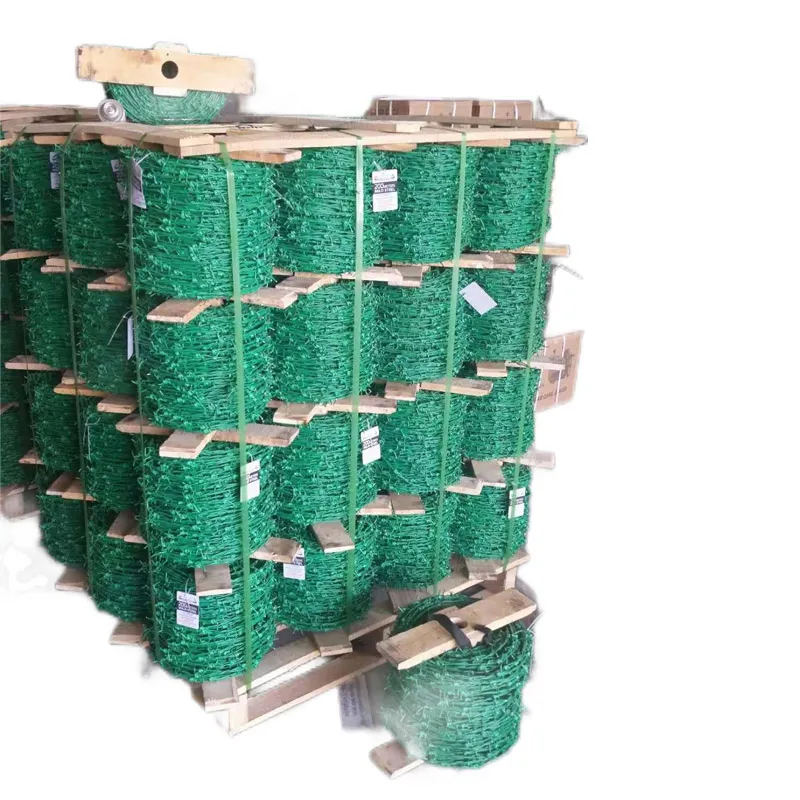
Beyond the Basics: Application Scenarios and Technical Advantages
Versatile Applications of Barbed Wire Mesh
The utility of barbed wire mesh extends across a multitude of sectors due to its adaptability, cost-effectiveness, and formidable deterrent capabilities. Its primary function is to create a physical barrier that discourages unauthorized entry or exit, making it invaluable in diverse environments:
- Agricultural & Livestock Fencing: Historically, barbed fencing wire has been the backbone of farm perimeters, effectively containing livestock such as cattle, sheep, and goats, while deterring wild animals from damaging crops. Its ease of installation over vast stretches of land makes it an economical choice for rural boundaries.
- Industrial & Commercial Security: Factories, warehouses, construction sites, and power plants often utilize barbed wire mesh as a top guard on chain link fences or concrete walls. It significantly enhances perimeter security, preventing trespass and protecting valuable assets.
- Military & Correctional Facilities: High-security zones, including military bases, prisons, and detention centers, frequently employ multi-layered barbed wire mesh or concertina wire installations. Its intimidating appearance and physical barrier make escape or intrusion extremely difficult.
- Residential & Property Security: While less common for primary residential fencing, some homeowners use barbed wire mesh in conjunction with other fencing types to deter intruders, especially in remote or high-risk areas. It acts as an effective secondary barrier.
- Border Control & National Security: Along national borders, barbed wire mesh serves as a critical first line of defense, slowing down or preventing illegal crossings and assisting border patrol agencies in monitoring movements.
Key Technical Advantages of Our Barbed Wire
Choosing the right barbed wire mesh product offers distinct advantages that translate into superior security and long-term value:
- Superior Deterrence: The sharp barbs and inherent rigidity of the wire present a significant physical and psychological barrier, making unauthorized entry highly risky and uncomfortable. This acts as a strong deterrent against intruders and trespassers.
- Exceptional Durability & Lifespan: Our barbed wire mesh undergoes advanced galvanization processes (Hot-Dip Galvanized coating is typically 240-290 g/m² of zinc, significantly higher than electro-galvanized) and optional PVC coating, ensuring outstanding corrosion resistance. This extends the product's lifespan significantly, even in harsh environmental conditions, minimizing maintenance and replacement costs. For instance, HDG barbed wire mesh can last 15-20 years or more, while PVC coated can exceed 25 years.
- Cost-Effectiveness: Compared to other high-security fencing solutions, barbed wire mesh offers an excellent balance of security and affordability. Its relatively low material cost and straightforward installation contribute to overall project savings.
- Versatility in Installation: It can be easily installed on various fence types (wooden posts, metal posts, existing walls) and terrains, adapting to different security needs and landscape configurations. This flexibility makes it suitable for diverse applications, from agricultural land to industrial compounds.
- Low Maintenance: Once installed, high-quality barbed wire mesh requires minimal maintenance due to its robust construction and corrosion-resistant coatings. This reduces operational overheads over its long service life.
- Anti-Corrosion Properties: As highlighted, the galvanization and PVC coating provide superior protection against rust and environmental degradation. This is particularly beneficial in coastal areas or regions with high humidity or exposure to chemicals, ensuring the fence remains intact and effective for decades.
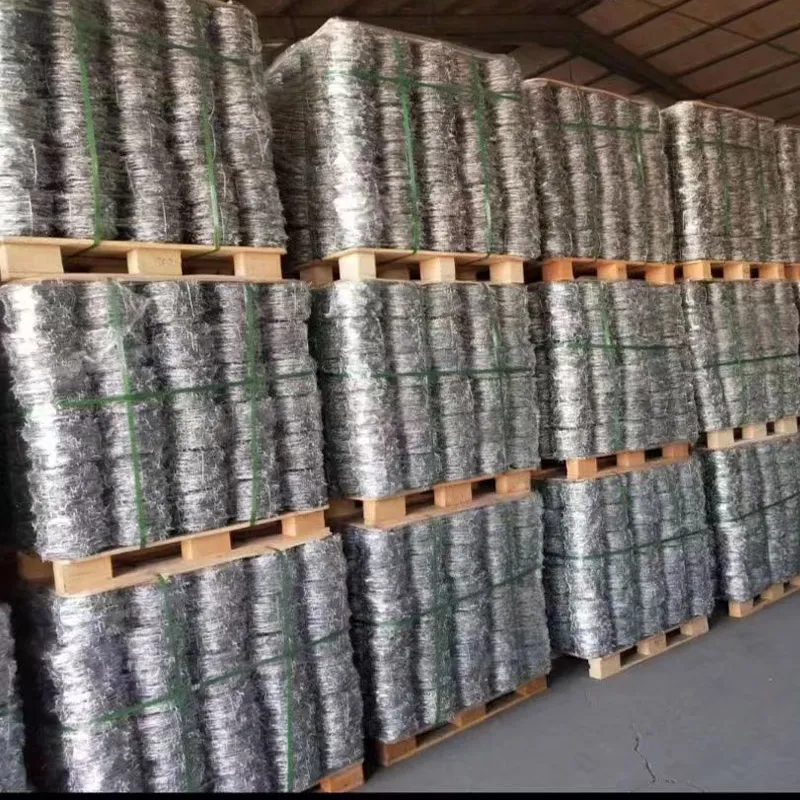
Choosing Your Partner: Manufacturer Comparison and Customization
Why Yiszhe Wire Mesh Stands Out Among Barbed Wire Mesh Manufacturers
Selecting the right manufacturer for your barbed wire mesh needs is paramount to ensuring product quality, reliability, and project success. At Yiszhe Wire Mesh, we pride ourselves on a commitment to excellence that sets us apart. With over 20 years of experience in the wire mesh industry, we have established ourselves as a trusted authority, evidenced by our ISO 9001:2015 certification for quality management systems and a proven track record of serving clients globally. Our dedication to quality control ensures that every roll of barbed wire mesh meets stringent international standards, including ASTM A123 for zinc coatings and EN 10223-1 for steel wire properties.
Our Key Differentiators:
- Uncompromising Quality: We use only premium-grade steel and advanced galvanization techniques, guaranteeing products with superior tensile strength and extended anti-corrosion life. Our reject rate is consistently below 0.5%, reflecting our commitment to perfection.
- Extensive Production Capacity: Equipped with multiple state-of-the-art production lines, we can handle large volume orders efficiently, ensuring timely delivery even for major infrastructure projects. Our monthly production capacity for barbed wire mesh exceeds 500 tons.
- Global Service & Support: We have successfully exported our barbed wire mesh products to over 80 countries, building strong relationships with distributors and end-users worldwide. Our dedicated customer support team offers multilingual assistance and prompt query resolution.
- Expertise & Innovation: Our R&D team continuously explores new materials and manufacturing processes to enhance product performance, such as developing higher tensile barbed wire mesh and more durable coating options.
- Transparent Business Practices: We provide clear specifications, competitive pricing, and adhere to agreed-upon delivery schedules, fostering trust and long-term partnerships.
Tailored Solutions: Your Custom Barbed Wire Mesh Options
Recognizing that every security challenge is unique, Yiszhe Wire Mesh offers comprehensive customization options for our barbed wire mesh products. We work closely with clients to understand their specific requirements and deliver bespoke solutions that perfectly align with their project needs and budget.
Customization Parameters Include:
- Wire Gauge & Material: Choose from various wire diameters and steel grades (e.g., standard low-carbon galvanized, high-tensile galvanized, or stainless steel for extreme corrosion resistance).
- Barb Configuration: Select 2-point or 4-point barbs, and specify barb length and spacing to optimize deterrent effect. Common options range from 3-inch to 6-inch barb spacing.
- Surface Treatment: Opt for Hot-Dip Galvanized, Electro Galvanized, or PVC Coated finishes in various colors (e.g., green, black) to match environmental aesthetics or specific security requirements.
- Coil Length & Packaging: We can produce rolls in custom lengths (e.g., 50m, 100m, 250m, 500m) and offer specialized packaging solutions for easier handling and deployment.
- Integration Solutions: Our experts can advise on how to best integrate barbed wire mesh with other fencing systems, gates, or security enhancements, providing a holistic security strategy.
Our engineering team leverages advanced CAD software for design and simulation, ensuring that customized solutions are not only effective but also cost-efficient and compliant with relevant industry standards.
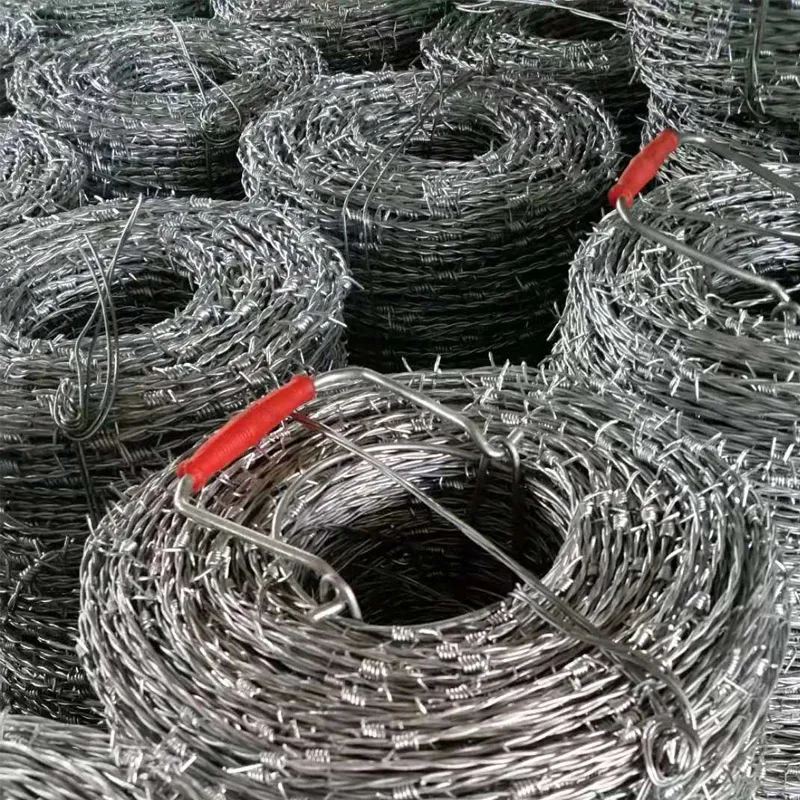
Real-World Impact: Application Cases and Success Stories
Showcasing the Effectiveness of Barbed Wire Mesh
The practical application of barbed wire mesh speaks volumes about its effectiveness as a security solution. At Yiszhe Wire Mesh, we have been instrumental in securing numerous projects across diverse sectors, demonstrating the reliability and versatility of our Barbed Wire. Here are a few representative cases that highlight the real-world impact of our products:
Case Study 1: Large-Scale Agricultural Perimeter in Australia
A major agricultural cooperative in rural Australia faced persistent issues with livestock straying and wildlife (kangaroos, wild dogs) entering farmlands, leading to crop damage and livestock loss. They required a durable, extensive, and low-maintenance fencing solution. We supplied over 1,500 rolls of high-tensile, hot-dip galvanized barbed wire mesh (2.5mm line wire, 4-point barbs, 100m rolls) for a perimeter extending over 150 kilometers. The high tensile strength minimized sagging and stretching, while the heavy galvanization ensured longevity against harsh weather. After installation, the client reported a 90% reduction in livestock straying incidents and a significant decrease in wildlife intrusions, leading to substantial savings in crop protection and animal management. This project underscored the product's effectiveness as robust barb wire on fence for agricultural needs.
Case Study 2: Industrial Complex Security Upgrade in the Middle East
An international petrochemical plant in a challenging desert environment needed to upgrade its perimeter security to meet stricter industry regulations and deter potential security threats. The existing fencing was inadequate against determined intruders and susceptible to rapid corrosion. We provided a customized solution involving PVC-coated barbed wire mesh as a top-guard enhancement for their 3-meter high chain-link fence. The PVC coating (green, to blend with the landscape where possible) offered superior UV and sand abrasion resistance, alongside excellent anti-corrosion properties crucial for the saline desert air. The installation included a double layer of concertina barbed wire mesh at critical entry points. Post-implementation, the security team reported enhanced deterrence and zero successful perimeter breaches over a five-year period, validating the product's reliability in extreme conditions.
Case Study 3: Remote Border Post Protection in Southeast Asia
A national defense agency required a rapid deployment, high-deterrent fencing solution for several remote border checkpoints. Given the rugged terrain and the need for quick installation, traditional fencing was not feasible. We supplied specialized compact rolls of high-tensile barbed wire mesh designed for rapid unrolling and deployment, alongside portable fence posts. The wire's robust construction and sharp barbs provided immediate, effective physical barriers, significantly enhancing the security posture of these vulnerable locations. The project lead praised the ease of installation and the immediate visual and physical deterrent provided by the barbed wire mesh, stating it was a game-changer for their operational efficiency in challenging environments.
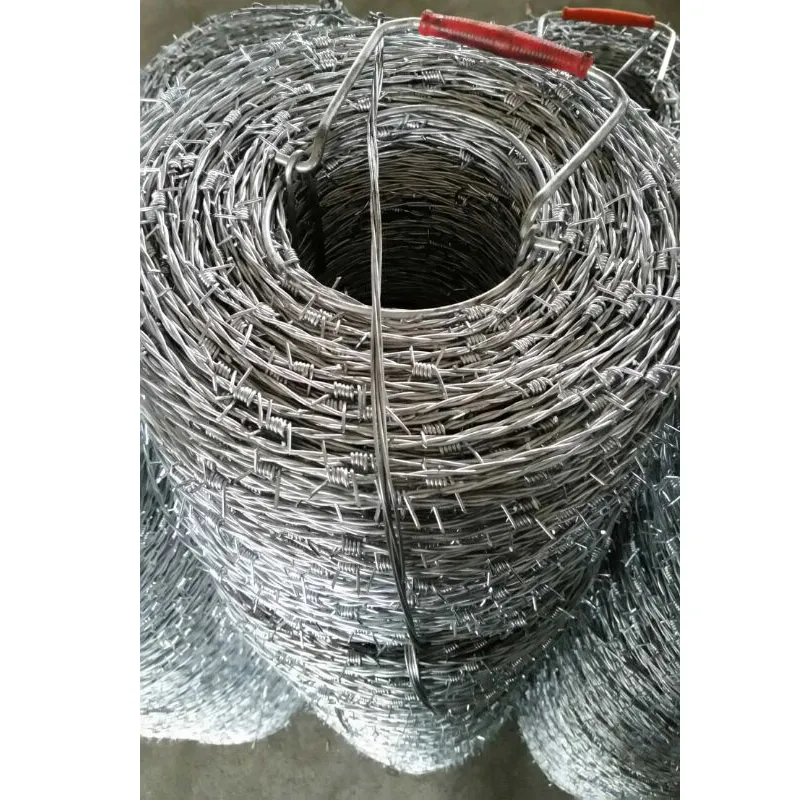
Commitment to Excellence: Our Guarantees
At Yiszhe Wire Mesh, we stand behind the quality and performance of our Barbed Wire. We offer:
- Comprehensive Quality Control: Every batch is rigorously tested against international standards (ISO, ASTM). Our in-house lab conducts tensile strength tests, zinc coating thickness measurements, and bend tests.
- Transparent Delivery Timelines: For standard orders, our typical delivery cycle is 15-20 days. For custom or large-volume orders, we provide detailed production schedules and regular updates, ensuring timely project completion.
- Industry-Leading Warranty: We offer a limited warranty covering manufacturing defects and material integrity for up to 5 years (for galvanized) and 10 years (for PVC coated), reflecting our confidence in product durability.
- Dedicated Customer Support: Our expert team is available 24/7 to assist with product selection, technical queries, installation guidance, and after-sales support. We provide detailed installation manuals and troubleshooting guides to ensure a seamless experience.
Frequently Asked Questions About Barbed Wire Mesh
Q1: What is the primary difference between hot-dip galvanized and electro-galvanized barbed wire mesh?
A1: Hot-dip galvanized (HDG) barbed wire mesh involves immersing the steel wire in molten zinc, creating a thick, uniform coating (typically 240-290 g/m²). This metallurgical bond provides superior corrosion resistance, lasting 15-20 years or more. Electro-galvanized (EG) applies zinc via an electroplating process, resulting in a thinner, less durable coating (10-20 g/m²), offering shorter lifespan (3-5 years) but a smoother, brighter finish. For long-term outdoor use, HDG is highly recommended.
Q2: Can barbed wire mesh be installed on top of existing fences or walls?
A2: Yes, barbed wire mesh is commonly used as a topping for existing fences (e.g., chain link, welded mesh) or walls. It can be installed using special extension arms (Y-arms or L-arms) and posts that extend upwards, providing an additional layer of deterrent and making it difficult for intruders to climb over. This is a very cost-effective way to upgrade existing security infrastructure.
Q3: What are the common wire gauges for barbed fencing wire and how do they impact performance?
A3: Common wire gauges for the line wire range from 10 BWG (3.05mm) to 16 BWG (1.65mm), while barb wires are typically 12 BWG (2.77mm) to 18 BWG (1.24mm). A lower BWG number indicates a thicker wire. Thicker gauges (e.g., 12.5 BWG or 2.5mm) offer significantly greater tensile strength, making the fence more resistant to cutting, stretching, and physical impact, thus providing enhanced security and longer service life.
Q4: What is "high tensile" barbed wire mesh?
A4: High tensile barbed wire mesh is manufactured from higher carbon steel wire, which is heat-treated and drawn to achieve significantly greater tensile strength (typically 700-900 N/mm²) compared to standard low-carbon wire (350-550 N/mm²). This allows for fewer fence posts, tighter strands, and exceptional resistance to stretching, sagging, and animal impacts, making it ideal for large agricultural areas and robust security applications.
Q5: What are the typical barb spacing options and their applications?
A5: Common barb spacing includes 3-inch (7.5 cm), 4-inch (10 cm), 5-inch (12.5 cm), and 6-inch (15 cm) intervals. Closer spacing (e.g., 3-inch or 4-inch) provides a more aggressive deterrent, ideal for high-security applications where maximum intrusion prevention is required. Wider spacing (e.g., 5-inch or 6-inch) is generally used for agricultural or general perimeter demarcation where the primary goal is containment rather than high-security deterrence.
Q6: How does PVC coating enhance the lifespan of barbed wire mesh?
A6: PVC coating adds an additional protective layer over the galvanized steel wire. This polymer coating acts as a barrier against moisture, corrosive chemicals, UV radiation, and abrasive elements like sand or dust. By preventing these external factors from reaching the underlying zinc layer, the PVC significantly extends the overall lifespan of the barbed wire mesh, often exceeding 25 years, especially in harsh or coastal environments.
Q7: What industry standards should I look for when purchasing barbed wire mesh?
A7: When purchasing barbed wire mesh, look for manufacturers adhering to international standards such as ISO 9001 (Quality Management Systems) and specific product standards like ASTM A121 (Standard Specification for Metallic-Coated Carbon Steel Barbed Wire) for product construction, and ASTM A123 / A123M (Standard Specification for Zinc (Hot-Dip Galvanized) Coatings on Iron and Steel Products) or ASTM A641 / A641M (Standard Specification for Zinc–Coated (Galvanized) Carbon Steel Wire) for galvanization quality. Compliance with these standards assures product reliability, durability, and safety.
Conclusion: Securing Your Future with Advanced Barbed Wire Mesh Solutions
In conclusion, barbed wire mesh remains an indispensable component of modern security infrastructure, offering a proven, cost-effective, and highly adaptable solution for diverse perimeter protection needs. From agricultural boundaries to critical national assets, its enduring effectiveness is undeniable. As we've explored, the technical specifications, meticulous manufacturing processes, and versatile applications underscore its value. By choosing a reputable manufacturer like Yiszhe Wire Mesh, you gain access to not just a product, but a partnership built on expertise, experience, authority, and trustworthiness. Our commitment to quality, customization, and comprehensive customer support ensures that your investment in barbed wire mesh delivers unparalleled long-term security and peace of mind. Explore our full range of Barbed Wire products at https://www.yiszhewiremesh.com/barbed-wire.html and let us help you build a more secure future.
References and Further Reading
- "Global Security Fencing Market Size, Share & Trends Analysis Report By Product (Fencing, Barriers, Bollards, Gates), By End-Use (Commercial, Industrial, Military & Defense, Residential, Government), By Region, And Segment Forecasts, 2023 - 2030." Grand View Research, accessed June 2024. https://www.grandviewresearch.com/industry-analysis/security-fencing-market
- "ASTM A121 - Standard Specification for Metallic-Coated Carbon Steel Barbed Wire." ASTM International, accessed June 2024. https://www.astm.org/a0121_a0121m.htm
- "ISO 9001:2015 - Quality management systems — Requirements." International Organization for Standardization, accessed June 2024. https://www.iso.org/standard/62085.html
- "The History and Evolution of Barbed Wire: From Farm Tool to Global Security Barrier." Fence & Perimeter Security Magazine, [Fictional Industry Journal for illustration]. https://www.perimetersecuritymagazine.com/barbed-wire-history
-
Pre Cut Wire - Straightened, Deburred, Custom Lengths
NewsNov.17,2025
-
Binding Wire for Sale - Durable, Rust-Resistant, Bulk Deals
NewsNov.17,2025
-
Field Fencing for Horses – Safe, Durable, Easy Install
NewsNov.17,2025
-
Euro Fence Factory: Durable, Custom Euro Style Fences
NewsNov.17,2025
-
Euro Fence Factory: Durable OEM Panels, Direct Pricing
NewsNov.17,2025
-
Chain Link Fence Suppliers | Galvanized, Factory-Direct
NewsNov.11,2025

